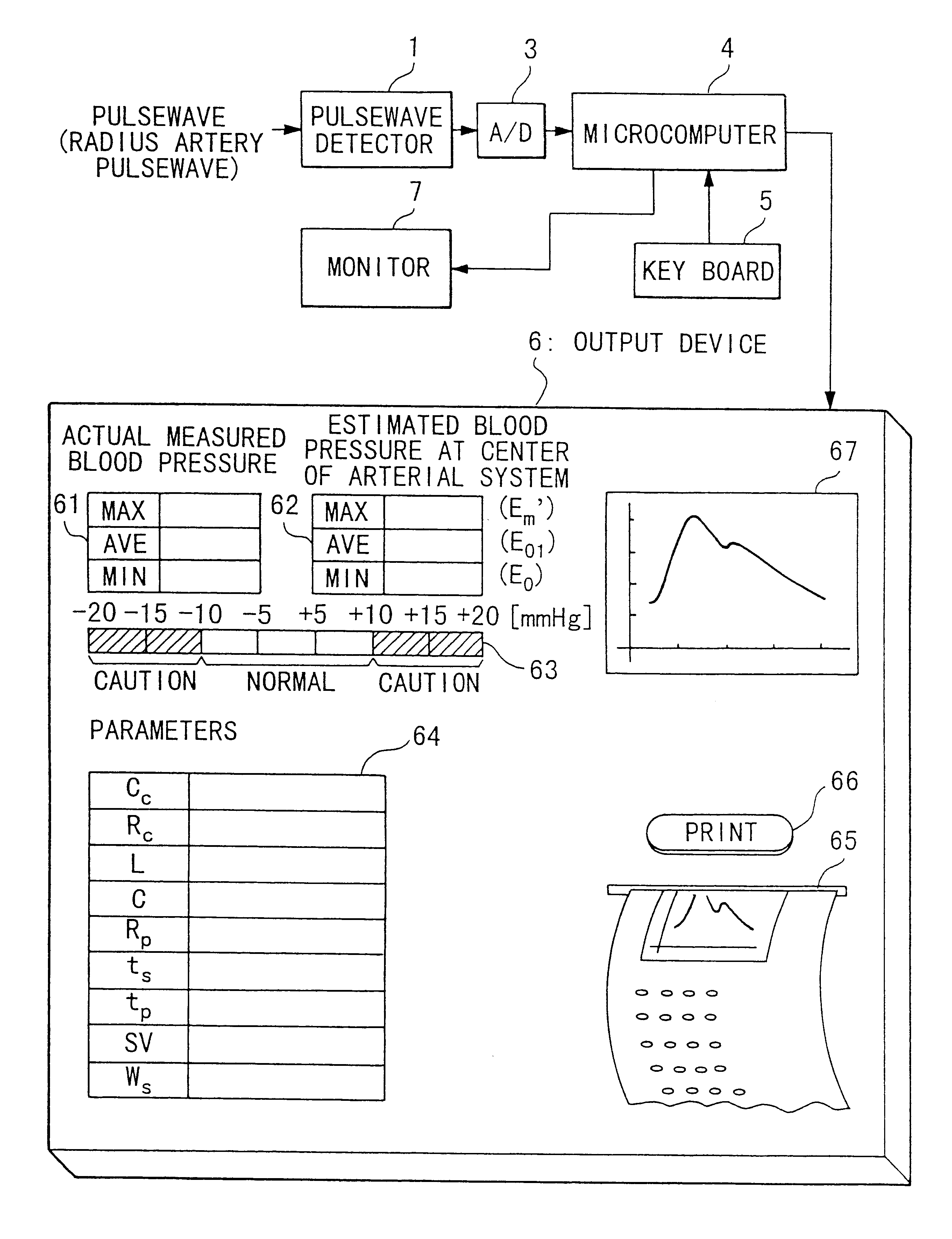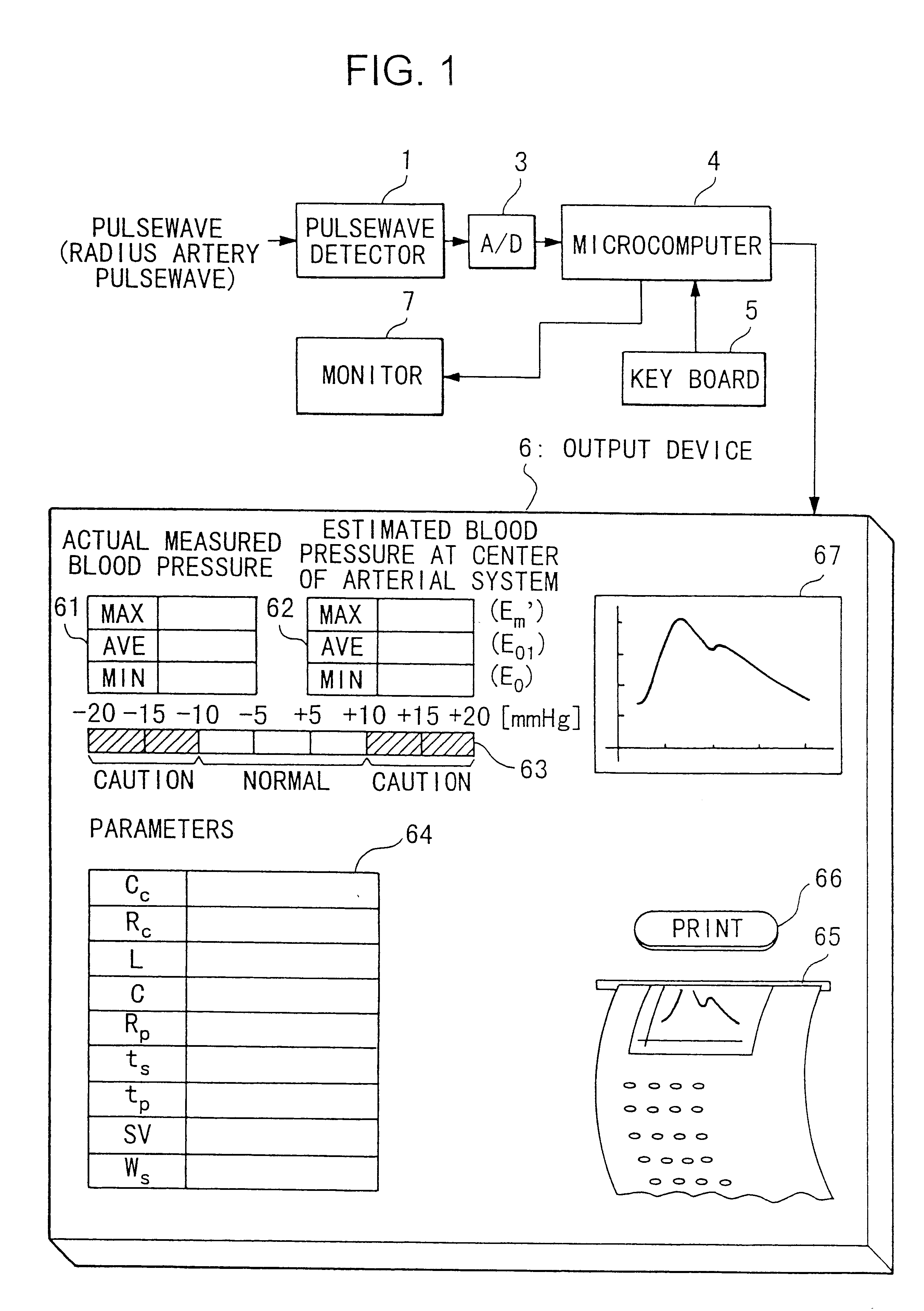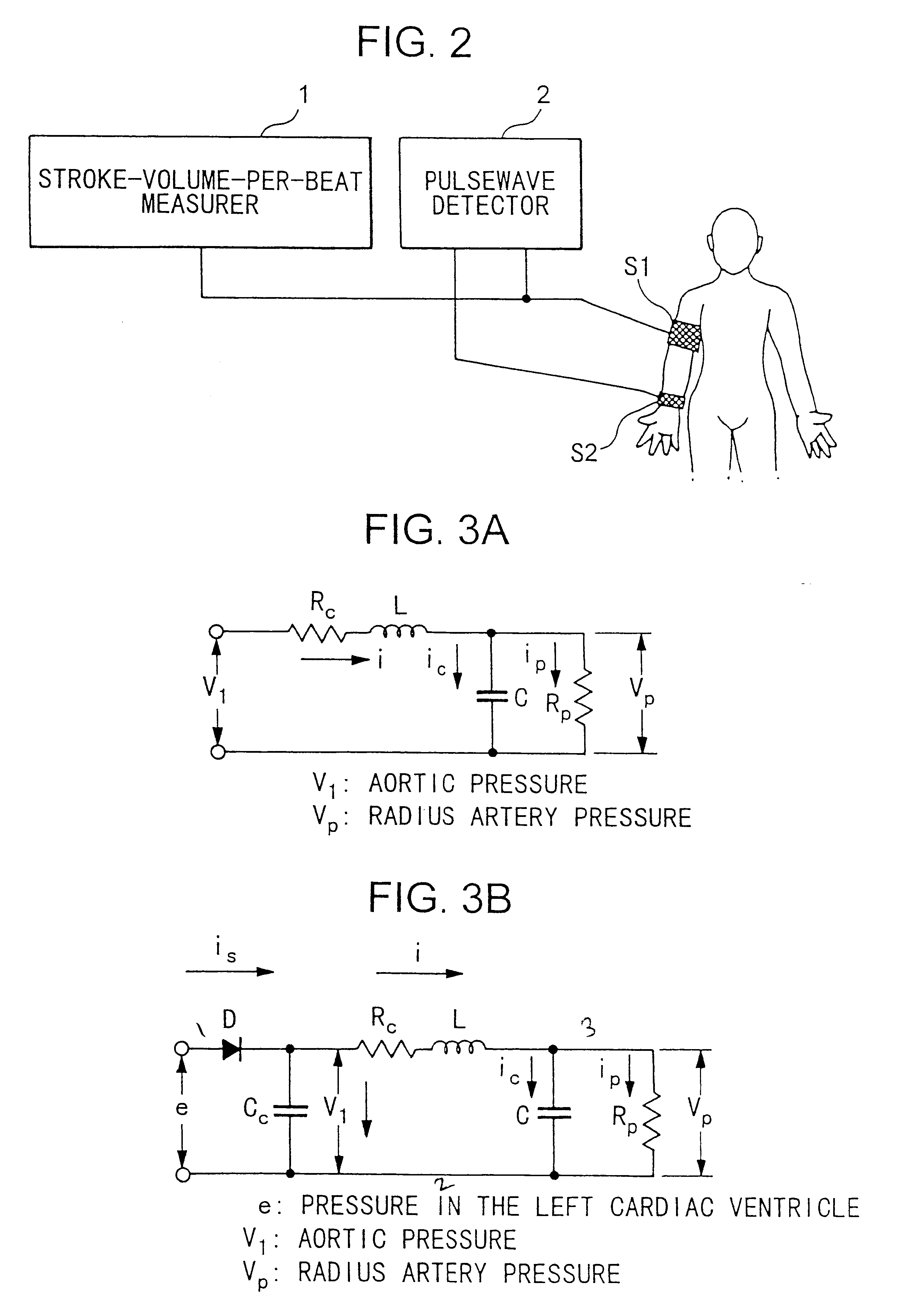Device for measuring physiological state
a physiological state and device technology, applied in the field of optimal devices for measuring physiological state, can solve the problems of not employing a model which treats, difficult to accurately ascertain the effect of drugs, and inability to evaluate the separate effects of drugs at the periphery and center of the arterial system
- Summary
- Abstract
- Description
- Claims
- Application Information
AI Technical Summary
Problems solved by technology
Method used
Image
Examples
first embodiment
the present invention will now be explained with reference to the accompanying figures.
FIG. 1 is a block diagram showing the composition of the sphygmomanometer employed in this embodiment. In this embodiment, circulatory state parameters for the arterial system in the human body are evaluated based on information obtained from the body using non-invasive sensors. The specific details of these circulatory state parameters will be explained later.
In FIG. 1, a pulsewave detector 1 detects the pulsewave at the radius artery via a pressure sensor S2 which is attached to the wrist of a test subject as shown in FIG. 2. Additionally, pulsewave detector 1 detects the blood pressure of the test subject via a cuff S1 attached to the upper arm of the subject as shown in FIG. 2. Pulsewave detector 1 corrects the measured radius artery pulsewave for blood pressure, and outputs the result as an analog electric signal. The analog signals are input to an A / D (analog / digital) converter 3, and are co...
PUM
 Login to View More
Login to View More Abstract
Description
Claims
Application Information
 Login to View More
Login to View More - R&D
- Intellectual Property
- Life Sciences
- Materials
- Tech Scout
- Unparalleled Data Quality
- Higher Quality Content
- 60% Fewer Hallucinations
Browse by: Latest US Patents, China's latest patents, Technical Efficacy Thesaurus, Application Domain, Technology Topic, Popular Technical Reports.
© 2025 PatSnap. All rights reserved.Legal|Privacy policy|Modern Slavery Act Transparency Statement|Sitemap|About US| Contact US: help@patsnap.com



